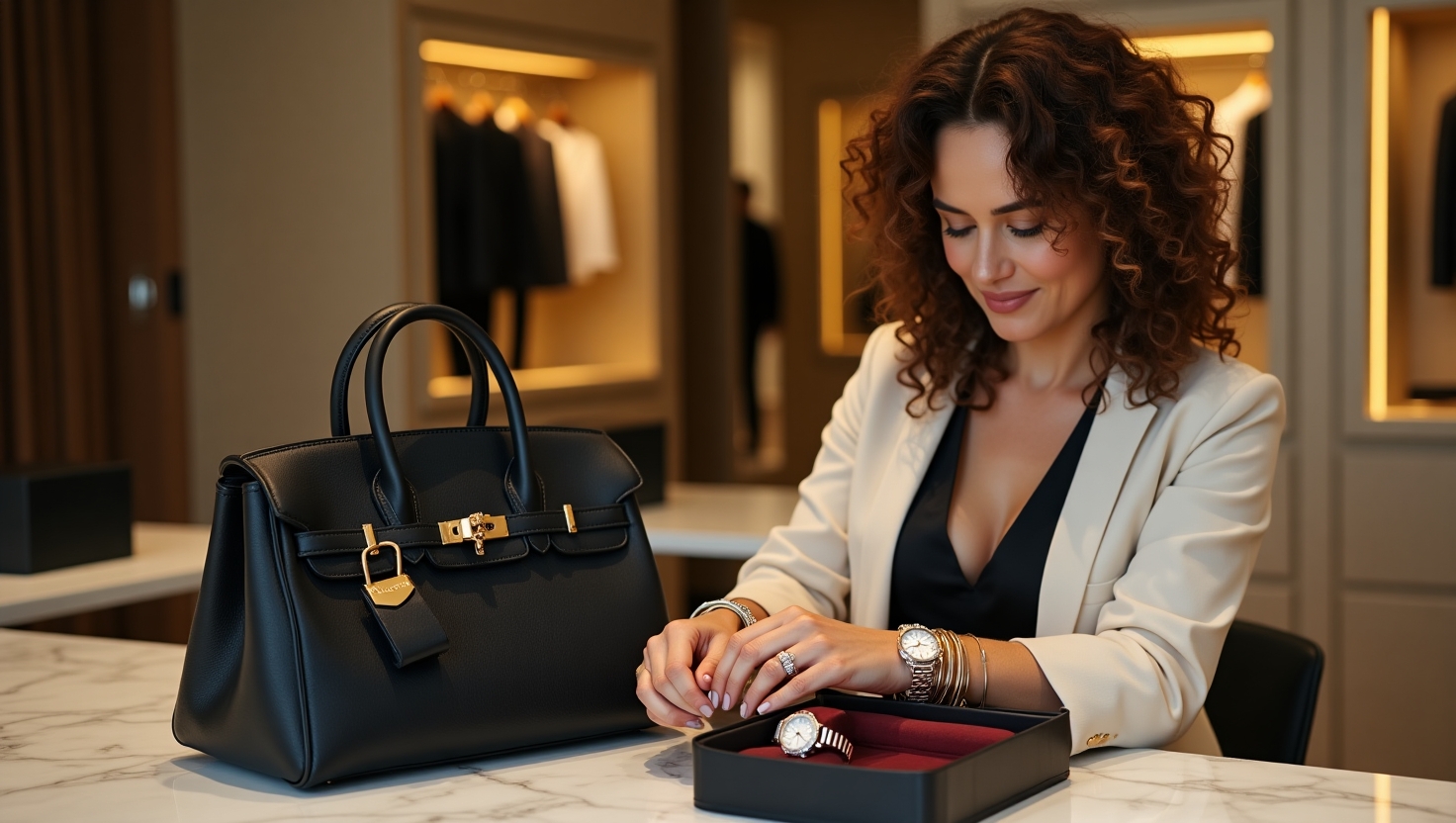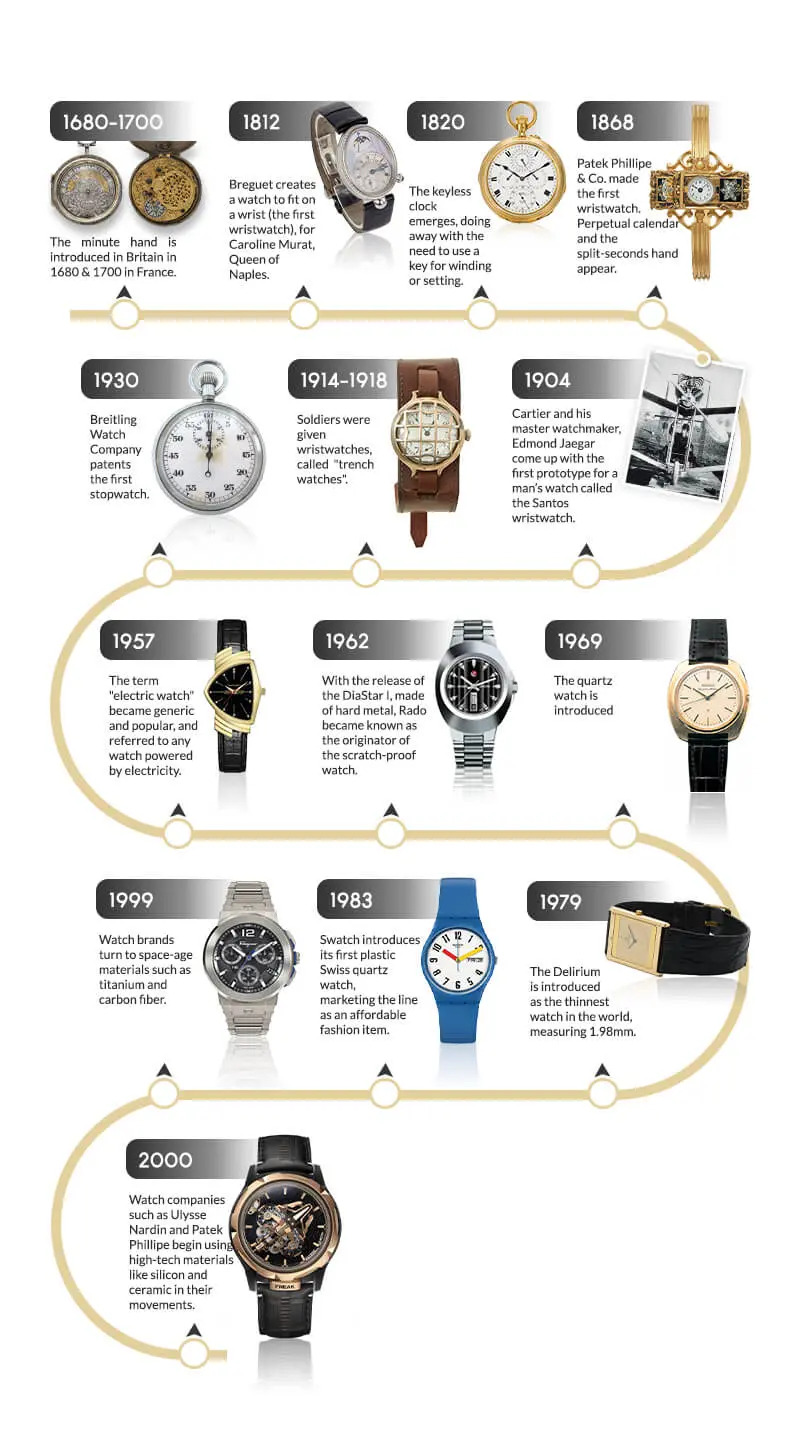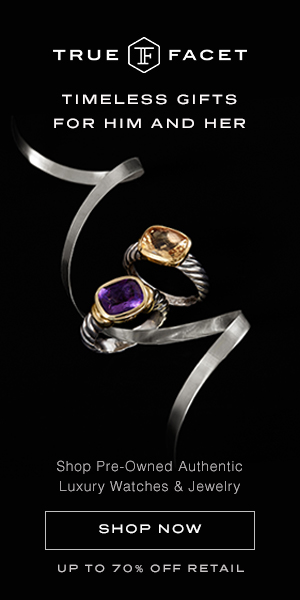When Was the Wristwatch Invented? A Fascinating Journey from Military Tool to Luxury Icon
Introduction: The Wristwatch Revolution – From Novelty to Necessity
Wristwatches are now a staple of professional style, status symbols, and precision craftsmanship. But did you know they were once considered feminine accessories , worn almost exclusively by women? So, when was the wristwatch invented, and how did it become an essential part of everyday life — especially for men?
This article explores the origin of the wristwatch , its rise through military necessity, and its transformation into a symbol of luxury and performance. Along the way, we’ll answer questions like:
- Who invented the wristwatch?
- When was the first wristwatch made?
- Why did men start wearing wristwatches?
Whether you’re considering your next timepiece or just curious about horological history, this journey will deepen your appreciation for what’s on your wrist.
Origins: When Was the First Wristwatch Invented?

Pre-Owned Luxury Products
The story begins in 1810 , when Patek Philippe — then known as Patek, Czapek & Cie — created the world’s first known wristwatch for Countess Koscowicz of Hungary .
Yes, that’s right — the very first wristwatch was designed for a woman.
At the time, pocket watches dominated the market. Wearing a timepiece on the wrist was unconventional and primarily associated with fashionable aristocratic women , not practical use.
For decades after, wristwatches remained a niche product. They were delicate, ornamental, and often set in bracelets or bangles. It would take a global conflict — and a visionary entrepreneur — to change all that.
World War I: The Turning Point for Men’s Wristwatches
If you’re wondering when wristwatches became popular among men , the answer lies in World War I .
During the war, soldiers needed to check the time quickly while in the field. Pocket watches were impractical in combat — pulling one out could cost a soldier his life.
Enter the wristwatch.
Military leaders recognized the tactical advantage of wrist-mounted timekeeping, and soon, manufacturers like Rolex , Omega , and Tudor began producing rugged, waterproof wristwatches for troops.
By the end of the war, returning soldiers continued wearing their wristwatches — and public perception shifted dramatically. What had been a feminine accessory was now seen as practical, masculine, and modern .
Luxury Meets Utility: The Rise of Iconic Watch Brands
After the war, wristwatches entered the mainstream — but they were still far from being fashion statements.
It wasn’t until the 1920s and 1930s that brands like Rolex and Tudor began transforming wristwatches into icons of craftsmanship and prestige .
Rolex: Setting the Standard
In 1926 , Rolex introduced the Oyster case — the first waterproof wristwatch. This innovation laid the foundation for the modern dive watch and cemented Rolex’s reputation for durability.
Tudor: The Affordable Alternative
Founded in 1926 by Hans Wilsdorf (the same founder of Rolex), Tudor was created to offer high-quality watches at a more accessible price point.
Tudor initially used many of the same components as Rolex — including Oyster cases and crowns — making them reliable companions for adventurers and professionals alike.
Over time, both brands expanded their collections, creating legendary models like the Rolex Submariner , Tudor Black Bay , and Rolex GMT-Master II — watches that continue to define luxury sports watches today.
The Quartz Crisis and the Mechanical Revival
In the 1970s , the Swiss watch industry faced a major threat: the quartz revolution .
Japanese brands like Seiko introduced affordable, highly accurate quartz watches — threatening the dominance of mechanical Swiss timepieces.
Many Swiss brands struggled, but others adapted.
By the 1980s and 1990s , there was a revival of interest in mechanical watches — driven by collectors and enthusiasts who appreciated their craftsmanship, heritage, and emotional value.
Brands like Tudor and Rolex benefited from this resurgence, with vintage models becoming highly sought-after collectibles.
Today, mechanical watches are once again celebrated — not just for their function, but for their history, design, and cultural significance .
Timeline Infographic: Key Milestones in Wristwatch History
Year |
Milestone |
| 16th Century | First portable timepieces (pocket watches) |
| 1810 | First wristwatch made for Countess Koscowicz |
| Early 1900s | Military adoption begins |
| 1926 | Rolex introduces the Oyster case |
| 1950s | Dive watches emerge (Submariner, Speedmaster) |
| 1970s | Quartz crisis hits |
| 2000s–Present | Mechanical revival and smartwatch boom |

History of Wristwatch
Why Understanding Watch History Makes You a Smarter Buyer
Understanding the history of wristwatches isn’t just interesting trivia — it can actually help you make better purchasing decisions.
Here’s how:
Vintage Watches Hold Historical Value
Certain watches — like early Tudor Submariners or vintage Rolex Daytonas — have skyrocketed in value because of their historical significance.
Knowing which models were produced during key moments in horology can help you identify future collectibles.
Design Evolution Reflects Brand Identity
Both Tudor and Rolex draw heavily from their past. The Tudor Black Bay , for example, pays homage to the original Tudor Submariner, while the Rolex Submariner has remained largely unchanged since the 1950s.
Understanding these design cues helps you choose a watch that aligns with your personal style and values.
Movement Innovation Influences Performance
While Rolex leads in proprietary movement development (like the Chronergy escapement), Tudor uses a mix of in-house and modified movements — often offering similar performance at a lower price.
Knowing what powers your watch gives you a deeper appreciation for its mechanics — and helps you evaluate its long-term reliability.
Conclusion: Timeless Style Starts With Knowing Where You Came From
Wristwatches have come a long way — from delicate jewelry for aristocrats to indispensable tools for soldiers, explorers, and professionals.
Understanding when the wristwatch was invented — and how it evolved — adds depth to your appreciation of modern timepieces.
Whether you’re investing in a vintage model or choosing your first luxury watch, knowing the story behind the watch makes your purchase more meaningful — and more informed.







